Hit the water with confidence with this breakdown of everything you need to know in this buyer’s guide for how to choose swim goggles.
Swimming is one of the best activities and sports on the planet.
The health benefits of swimming are legit: It’s low impact, allows you to unplug from your smartphone, and is a full-body workout that works all the major muscle groups.
But before you hit the pool, having the right swim goggles strapped to your head is important.
Proper swim goggles protect your eyes from getting red and itchy, allow you to see other swimmers and approaching walls, and protect your eyes from UV exposure when swimming outdoors.
But if you’ve ever looked at all the goggle options online, you can quickly start to feel like you are in the deep end (sorry).
Fret not—this swim goggle buyer’s guide will walk you through everything you need to know to find the best swim goggles for your time in the water.
Let’s dive right in.
Choosing Swim Goggles – Type of Swimming
The type of swimming goggles you choose will reflect the type of swimming you are doing and the environment you are splashing around in.
Lap swimming.
Whether you are a novice lap swimmer or an experienced competitive swimmer, the right swim goggles help you swim those laps in comfort and safety.
Lap swimmers want durability, performance features, and adjustability for extended wear.
Training swim goggles have the largest selection, from $6 bargain-bin goggles to $200 smart swim goggles with heads-up displays for real-time tracking.
Racing.
Swim goggles designed for competition have a low drag profile, side arms for increasing lens stability while swimming at full speed, and tend to be a little pricier, with some racing goggles costing as much as $90.
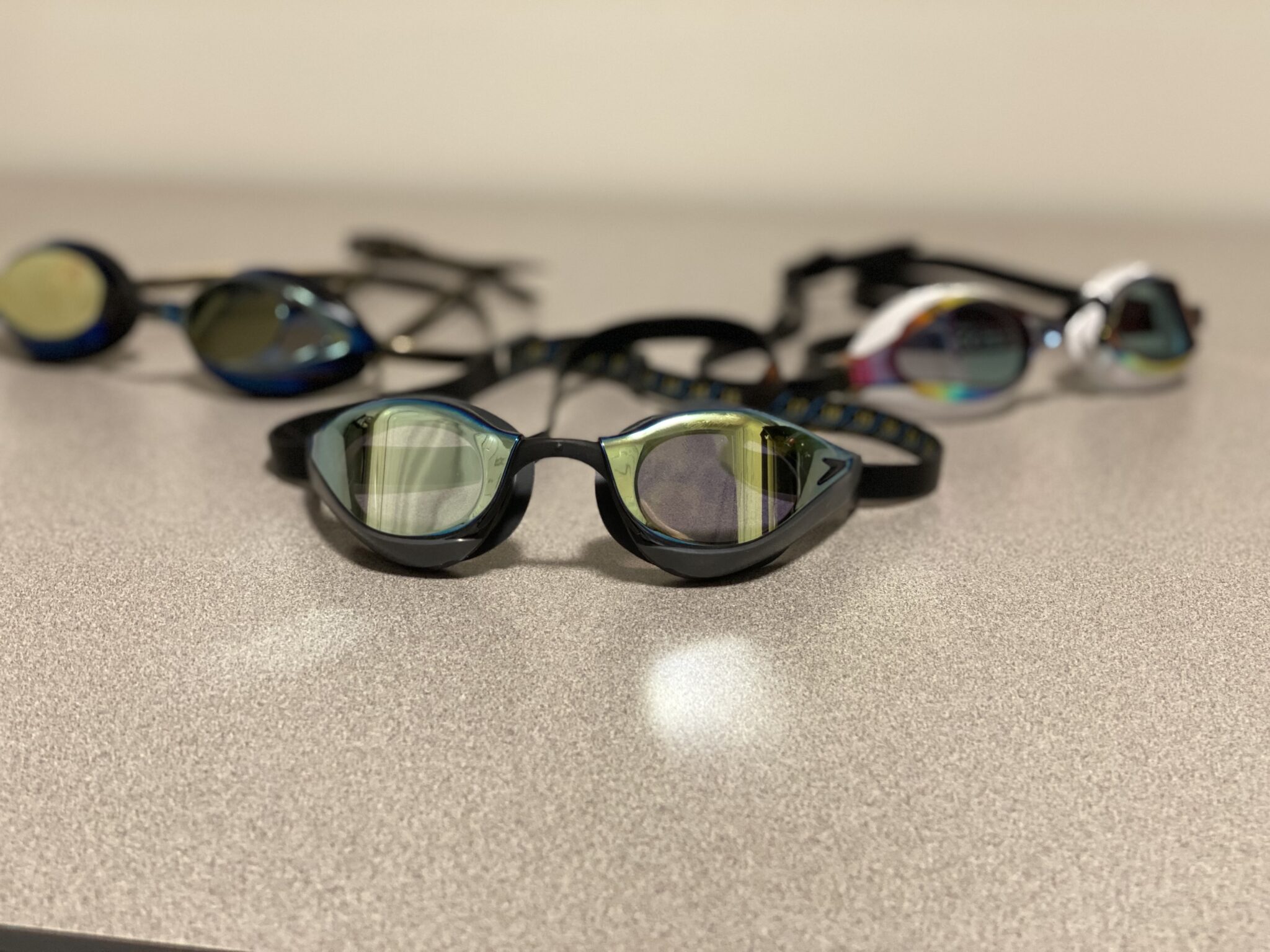
Racing swim goggles are slimmer and more hydrodynamic compared to training goggles and are designed to give you peace of mind when diving into the water off the block.
Open water swimming.
Open water swim goggles have a darker or mirrored tint, with lenses that are polarized to eliminate glare on the water.
Open water swim goggles have a larger goggle frame, allowing for better peripheral vision and making it easier to sight. Open water swim goggles also tend to have strap buckles on the sides of the goggle gasket for easier mid-swim strap adjustments.
Bulkier, with a wider range of vision, and with thicker straps and lenses designed for reducing eye strain from UV exposure, goggles for open water are designed to help swimmers conquer the elements in comfort.
Splashing around.
If you are simply looking to protect your eyes at the pool, or increasing the confidence of your kiddo so that they can dunk their head under the water, “splash around” swim goggles are very inexpensive and have playful designs and colors.
Swim goggles for kids have smaller gaskets and narrower lenses to accommodate for children’s faces, and the lens of kids’ swim goggles also tends to be clear or slightly colored to maximize vision.
Swim Goggles for Comfort and Fit
The main function of swim goggles is to allow you to see under the water, and this is difficult if they are constantly letting in water.
Swim goggles are almost universally adjustable and can be customized to the size and shape of your face.
The key things to look for when it comes to comfort and fit include:
Nose piece.
Swim goggles have two ocular lenses that are connected with a nosepiece.
Most popular swim goggles, like the Speedo Vanquishers 2.0, come with multiple nose pieces to allow for a perfect lens fit.
Additionally, more experienced swimmers will appreciate the total customization of the nose piece with Swedish goggles.
Either use the string that comes with the goggles, or cut off several inches of goggle strap and feed it through the lenses for a quick and custom fit.

Swedes are inexpensive, give great peripheral vision, and are very customizable.
Swedish goggles, also known as “Swedes,” have small inserts inside the gaskets where you can thread string, or my preferred option, a couple of inches of the goggle strap.
Head straps.
Goggles are kept on your head via head straps. They have a small plastic buckle on the back or sides that adjusts length.
The straps—especially when worn at a 45-degree angle from your eyes—keep the goggles in place.
Gaskets.
If leaky goggles are the bane of your existence, choose swim goggles with a silicone or rubber fold lining the goggles.
These gaskets create light suction on the skin, creating a seal and helping to keep water out.
Custom swim goggles.
Finally, I will mention that there is also one goggle manufacturer that 3D builds custom swim goggles based on a digital face scan of your face (seriously!) for a truly custom fit.
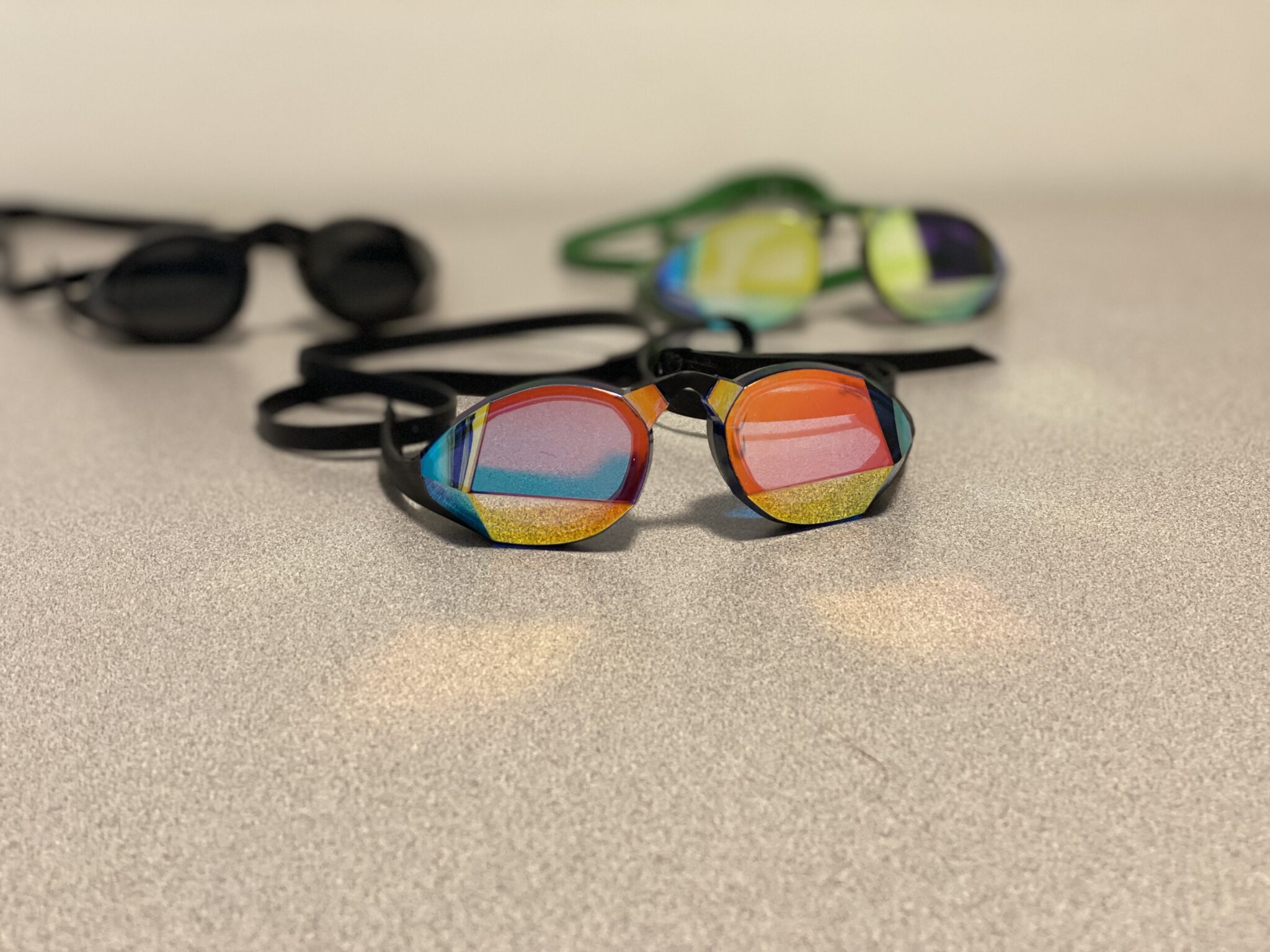
The Magic5 Swim goggles are the first (and only) custom gasket swim goggles on the pool deck.
TheMagic5 Swim Goggles are a unique goggle for people with really hard-to-fit faces or for swimmers who get headaches from traditional swim goggles.
Choosing the Right Swim Goggles — Performance Features
For more advanced swimmers, there are some features and things to look for beyond the basics:
Low drag profile.
Competitive swimmers looking for swim goggles for racing should look for goggles with a slim gasket profile.
Not only does this reduce drag in the water, but the slim profile also sinks deeply into the face, keeping them firmly in place when you dive into the water.

The gasket profile on the Arena Cobra Ultra Goggles is among the most hydrodynamic in the water.
Smart goggles.
The swimming community has caught up to land-dwelling athletes in terms of tech in a big way in recent years, first with wearables that have swim apps for chlorinated athletes, tracking every aspect of our swim workouts, but now swim goggles with heads-up displays!
We now have the option of using several smart swim goggles that show workout metrics (time elapsed, splits, distance, etc.) inside the lens of the goggles.
The FORM Swim Goggles and FINIS Smart Goggle are the two main competitors in this category and are a dream for data nerds sick of using the analog pace clock at the pool.
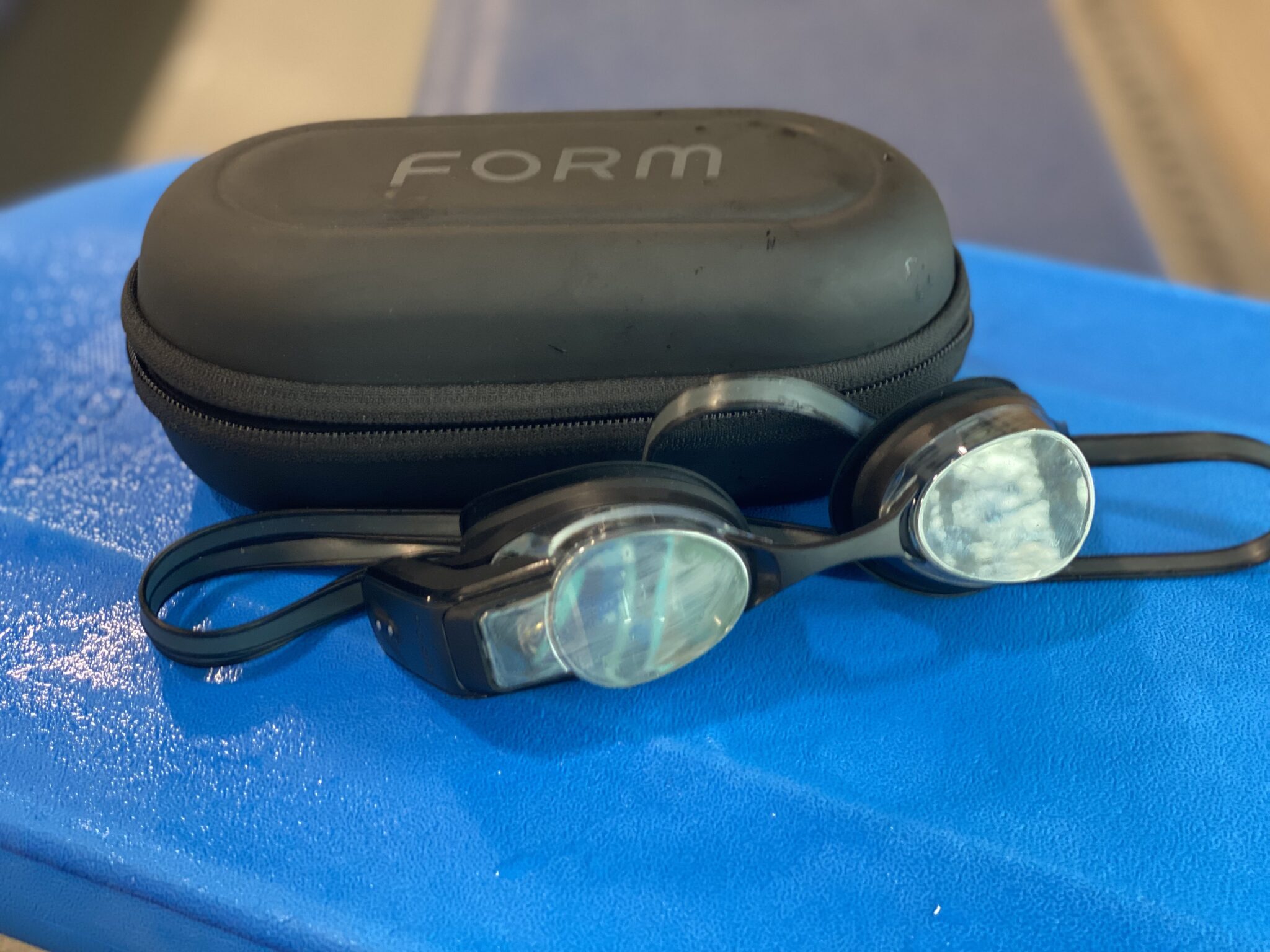
Obviously, with all of that fancy tech, the price tag goes up, but smart swim goggles are an excellent option for swimmers who like to swim (ahem) in training and performance metrics.
Lens options
The lens of the swim goggles should align with the environment and the unique needs of your eyes.
Key things to be on the look-out for include:
Clear and brightly colored lens for indoor pools.
Dimly-lit swim pools, like my local YMCA, require a lighter lens, from completely clear to colored (blue and orange help make shapes “pop” in darker pools).
Mirrored lens for privacy and looking badass.
Mirrored swim goggle lenses not only look particularly awesome, but they are also perfect for brighter swimming pools and swimming outdoors.
Polarized lens for outdoor and open water swimming.
Swimmers lucky enough to have access to an outdoor lap pool will want a goggle with a polarized lens to help reduce the eye strain from excessive glare.
Open-water swim goggles feature polarized lenses, which are essential for swimming outdoors as they cut down the blinding glare that can bounce off the water’s surface.
Prescription lenses.
While the number of prescription swim goggles doesn’t come close to what’s available with non-prescription lenses, there are still some quality picks.
Speedo makes an optical version of their best-selling Vanquisher 2.0 goggle, for example, and the Sporti S2, a popular bargain-friendly goggle, is also available with a prescription for farsighted and nearsighted swimmers.
See also: 7 Best Prescription Swimming Goggles for Clear Vision
Choosing Swim Goggles — Durability
And finally, you want a swim goggle that will work as hard as you in the water.
Here are the main things to be aware of when it comes to making your swim goggles last:
Anti-fog properties.
Goggles that perpetually fog up are a perpetual pain in the butt. No one wants to stop every length to wipe the inside of the lens clear so they can properly see where they are going.
Swim goggles almost universally come with an anti-fog coating applied inside.
The only real anti-fog swimming goggle, the Arena Cobra Ultra Swipe Goggle, takes it to the next level with a proprietary anti-fog that resets when you gently wipe the inside of the goggle with your finger (I kid you not!).
Consider investing in an anti-fog spray for your swim goggles as well. They are dirt cheap and can significantly extend the life of your goggles.
Or, you can go the organic route and spit into the lens to keep them clear.
Goggle case.
Swim goggles are designed to handle business, but they aren’t indestructible. One of the best ways to care for swim goggles is investing in a swim goggle case to help protect the goggles while they bounce around in the depths of your swim bag.
A case will keep your fancy-pants new swim goggles from getting scratched or damaged and help extend the goggles’ life and use.
(A case also makes it easier to dig your swim goggles out of the bottom of your swim gear.)
Silicone Construction
Silicone is the most durable material for swim goggles (and swim caps).
Unlike the swim goggles of yore, which primarily had head straps made of latex, which degraded and corroded quickly from UV and chlorine exposure, silicone lasts just about forever.
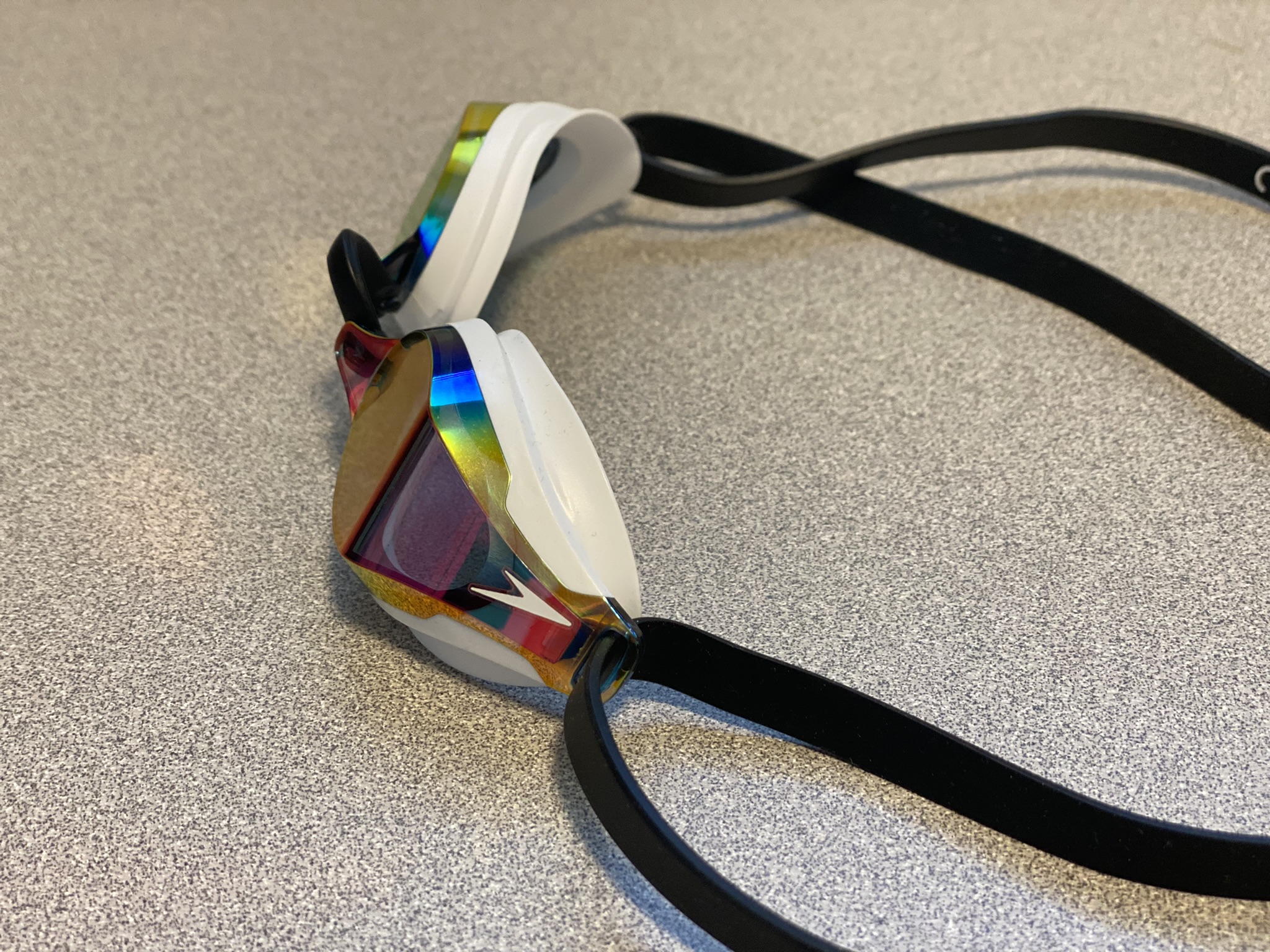
When choosing a swim goggle, look for silicone head straps and a silicone gasket for maximum durability.
Wrapping It Up
Swim goggles are an essential type of swim gear for hitting the pool (or open water).
They keep your eyes from getting all itchy and red from chloramines, protect them from the sun, and allow you to see what’s around you, whether the other swimmers in the lane or the touchpad at the end of a race.
Finding swim goggles that don’t leak, are comfortable, and can even provide real-time data on your swim workouts can be a total game-changer.
When you know what works for you, is comfortable, and won’t leak, you are more likely to hit the water again.
Choose the right swim goggles for you and your goals, and get your butt in the water!
All image credits: The author
ABOUT OLIVIER POIRIER-LEROY
Olivier Poirier-Leroy is a former national-level swimmer, author, swim coach, and certified personal trainer. He’s the author of YourSwimBook, a ten-month logbook for competitive swimmers.
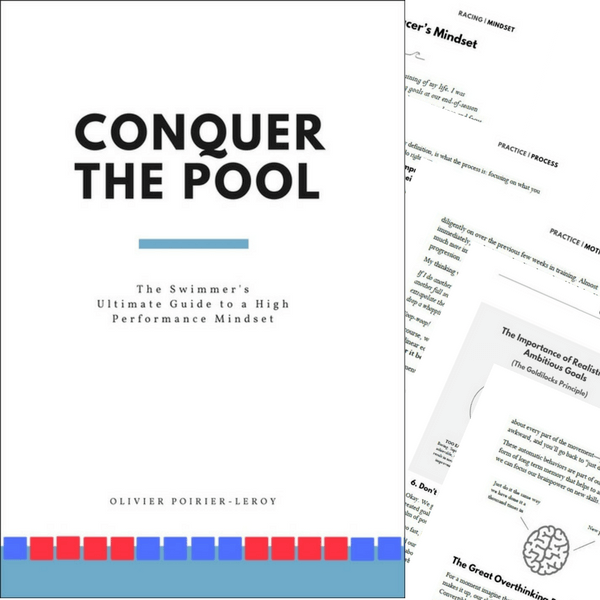 He’s also the author of the recently published mental training workbook for competitive swimmers, Conquer the Pool: The Swimmer’s Ultimate Guide to a High-Performance Mindset.
He’s also the author of the recently published mental training workbook for competitive swimmers, Conquer the Pool: The Swimmer’s Ultimate Guide to a High-Performance Mindset.
It combines sport psychology research, worksheets, anecdotes, and examples of Olympians past and present to give swimmers everything they need to conquer the mental side of the sport.
Ready to take your mindset to the next level in the pool?
Click here to learn more about Conquer the Pool.
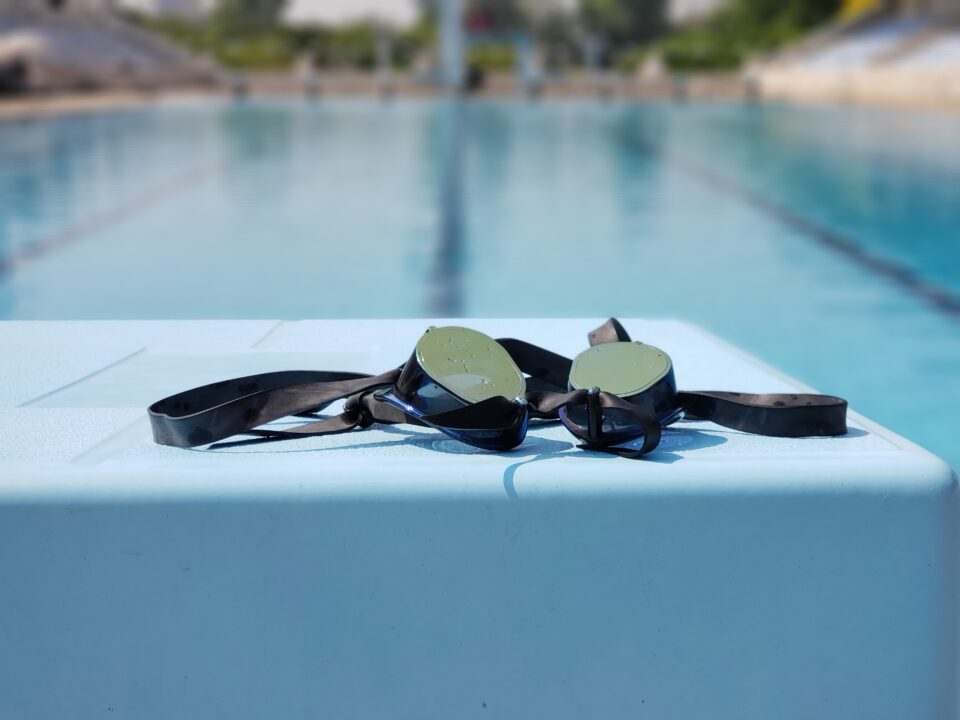
I got introduced to swedes by my swim coach as an 8U in the early 90s when I lost or broke my goggles at a meet. He helped me assemble a pair that I then wore for the rest of the meet and I’ve never looked back.
the answer is easy- swedes are superior to all goggles
nah speed sockets all the way
jokes aside (and my love for swedes aside) those are also pretty good goggles